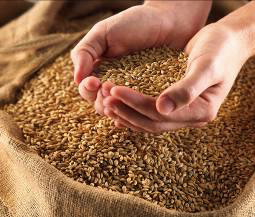FOR IMMEDIATE RELEASE
ACS News Service Weekly PressPac: February 13, 2013
'Masked' mold toxins in food should be included in safety regulations
“Masked Mycotoxins Are Efficiently Hydrolysed by Human Colonic Microbiota, Releasing Their Aglycones”
Chemical Research in Toxicology
Government limits on mold toxins present naturally in grain crops should be expanded to include so-called “masked mycotoxins” that change from harmless to potentially harmful forms in the body, a new study concludes. It appears in ACS’ journal Chemical Research in Toxicology.
Chiara Dall’Asta and colleagues explain that molds growing naturally on wheat, corn and other plants produce toxic substances termed mycotoxins. Some health experts regard mycotoxins as the most serious chronic dietary risk factor, greater than the potential health threats from pesticides and insecticides. Government regulations thus limit levels of mycotoxins that are permissible in food and animal feed. Plants protect themselves by binding or “conjugating” glucose, sulfur or other substances to the mycotoxin, producing conjugated mycotoxins that are not harmful.
Dall’Asta explains that these “masked mycotoxins” are not included in current safety regulations because of uncertainty about what happens when people and animals eat them. The new study focused on two of the most widespread mycotoxin contaminants of grain crops — deoxynivalenol (DON) and zearalenone (ZEN). The authors say their results show, for the first time, that bacteria present in the large intestine in people deconjugate or “unmask” DON and ZEN, releasing the original toxic forms. “For this reason, masked mycotoxins should be considered when evaluating population exposure," the study concludes.
The authors acknowledge funding from the Basic Research Investment Fund (FIRB), the Italian Ministry of University and Research and the AGER Project “From Seed to Pasta.”
![]()
Contact
Science Inquiries: Michael Woods, Editor, 202-872-6293
General Inquiries: Michael Bernstein, 202-872-6042

mold toxins that the federal government should
include in its safety regulations, scientists
recommend.

